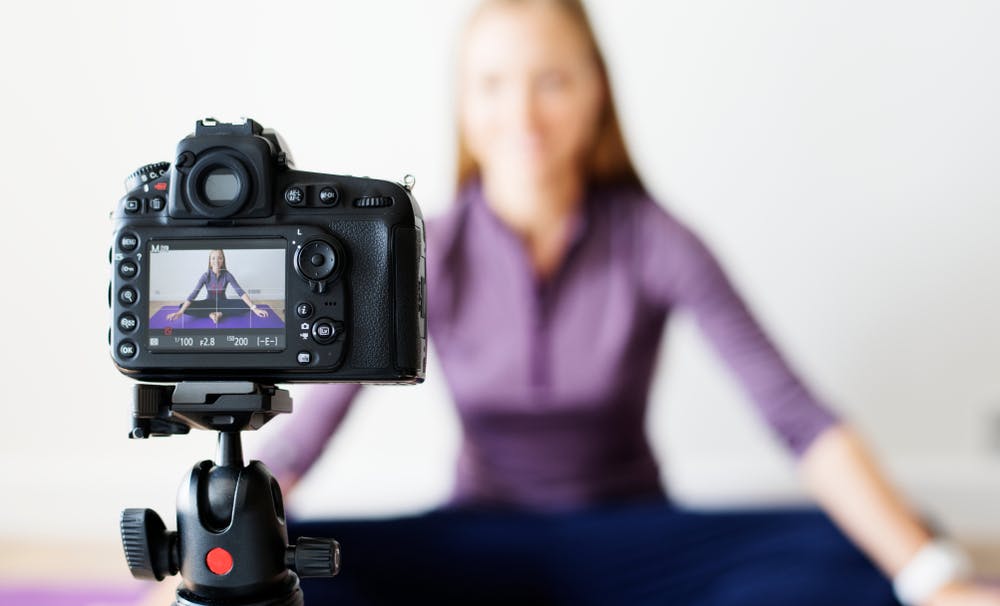The digital fitness industry has boomed in the last few years.
From brands like Peloton and Mirror, which offer gym-quality workouts at home, to giants like Nike and Adidas, who have helped to popularise ‘fit-tech’ through partnerships with Apple and Fitbit – many companies have found success. According to reports, the digital fitness industry generated $3.6 billion in revenue for the US alone in 2019.
Ramping up digital opportunities
Amid the coronavirus outbreak, Peloton and other digital fitness brands have found themselves in a more fortunate position than their brick-and-mortar counterparts. This is because they are already equipped to offer remote fitness to customers, and have naturally seen an uptick in demand as a result of people being prevented from working out in-person.
Shares of Peloton increased by 9.2% earlier this month, while downloads of its app were reportedly up five times in March compared to February. Since, Peloton has actually suspended deliveries of new treadmills, due to the size of the item making ‘no-contact’ deliveries difficult. However, it is still capitalising on demand of its home-workout app (which users can use without equipment), and has extended its free trial to 90-days.
If you’re in need of a supportive community and a way to clear your mind, we invite new users to try the Peloton App free for the next 90 days. Click here to get yoga, meditation, strength, stretching, and bodyweight training in your own home: https://t.co/LQ5G5Aeic8 pic.twitter.com/e6pS22yvn0
— Peloton (@onepeloton) March 16, 2020
Aaptiv is another digital fitness platform that has seen an increase in demand. Speaking to Business Insider, CEO and founder of Aaptive, Ethan Agarwal, says that “engagement for non-equipment programs has increased by 50% (for the week of 16th March), whereas usually the engagement is the same for both equipment and non-equipment based workouts”.
While an increase in custom is certainly a positive for these companies, others are not focusing on business gain. Les Mills, which offers on-demand digital fitness solutions as part of its membership, had opened up its digital platform for free to club partners and schools. CEO Clive Ormerod explained: “With health now a top-tier priority for people of all ages, our sector needs to stand shoulder-to-shoulder to work through the challenges ahead and emerge as a stronger, more vital cog in society than ever before.”
Another example of doing good is Joe Wicks, aka The Body Coach, who has begun holding daily live PE sessions on YouTube for children who are out of school. Of course, increased engagement is also a big benefit for influencers that rely on monetisation from social networks like YouTube and Instagram, making it a smart move all round. Wicks has since generated global awareness of the campaign, going on to stream P.E lessons to children in Australia and the US.
Finding new ways to reach audiences
It’s a worrying time for the brick-and-mortar fitness industry, with the majority of gyms forced to indefinitely close their doors. Many will undoubtedly suffer financial implications. However, the silver lining is that it can be possible for gyms to offer services to customers at home through digital channels, and many are now doing their best to create opportunities for online customers where possible.
Fortunately, social media makes video streaming an easy option, with Joe Wicks being an example that many are trying to follow. London fitness company Frame recently asked its audience on Instagram what exercise classes they’d want to be streamed, ahead of the gym’s launch of Frame Online. US gym chain, Planet Fitness, is doing a similar thing with free workouts for a period of two weeks, streamed on its Facebook and YouTube channels. Out of the gyms that are (yet) to experiment with digital solutions, the majority have frozen customers’ membership fees, in the hope that they will be able to reopen again in the summer. If lockdowns continue, however, it could be the case that we see more investing in digital solutions during the interim.
New influencer content
The inability to go to the gym means more than just the loss of fitness. For many, it is part of a daily routine, can offer social interaction, and help to ease anxiety of stress. With the current situation likely to have a negative impact on our mental health – it’s sudden absence can feel all the more difficult.
As a result of this, we are seeing many fitness influencers take the opportunity to promote exercise in the context of general well-being. A new report from Influencer Intelligence, on ‘What Covid-19 means for influencer marketing’, states that consumers are increasingly looking to influencers for content related to self-care.
Chris Davis, Head of Brand Partnerships at talent agency Gleam Solutions, told Influencer Intelligence: “The talent we manage are reporting back that their audiences are keen to have light relief from the unnerving situation – we’re seeing book clubs, guidance on how to maintain wellbeing and health, live music sessions, group yoga, home workout guides, creative recipes from cupboard ingredients and much more.”
For influencers who previously focused on gym-based workouts or standard exercise content, there could be the opportunity to capitalise on the changing habits of consumers, and to branch out into content that focuses on health and well-being.
Meanwhile, the pandemic could also lead to an influx of new influencers, as people look for ways to occupy themselves whilst at home (and explore other potential sources of revenue). In a recent survey, Global Web Index found that – while almost 45% of global consumers are devoting more time to social media – over 10% are also creating and uploading videos themselves. If one thing is for certain, then, we won’t have any excuses for not knowing how to workout at home.







